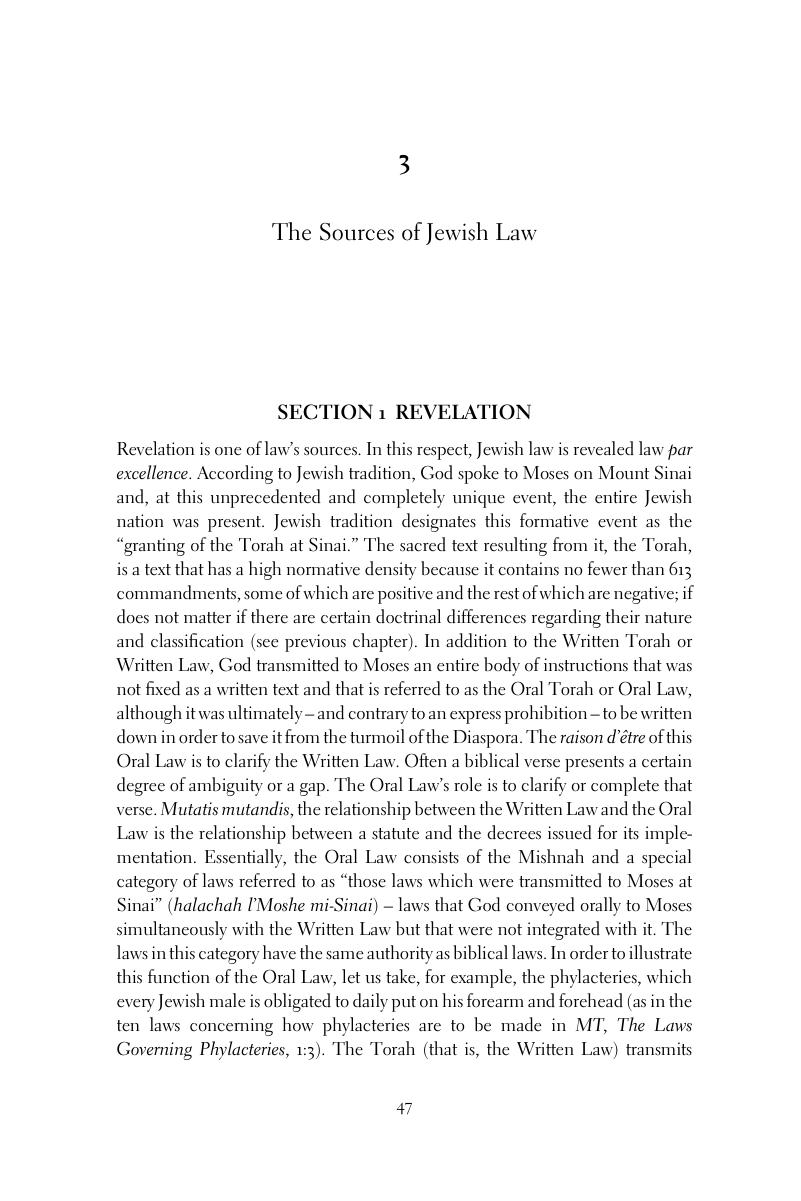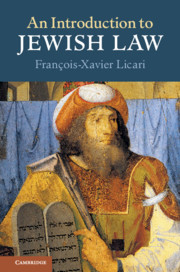Book contents
- An Introduction to Jewish Law
- An Introduction to Jewish Law
- Copyright page
- Dedication
- Contents
- Acknowledgments
- Abbreviations
- An Introduction to Jewish Law
- 1 Jewish Law As a Subject for Study
- 2 Jewish Law As a Religious Legal Order
- 3 The Sources of Jewish Law
- 4 Halachic Authority
- 5 Hermeneutics
- 6 Jewish Law and the Law of Nations
- Index
- References
3 - The Sources of Jewish Law
Published online by Cambridge University Press: 15 March 2019
- An Introduction to Jewish Law
- An Introduction to Jewish Law
- Copyright page
- Dedication
- Contents
- Acknowledgments
- Abbreviations
- An Introduction to Jewish Law
- 1 Jewish Law As a Subject for Study
- 2 Jewish Law As a Religious Legal Order
- 3 The Sources of Jewish Law
- 4 Halachic Authority
- 5 Hermeneutics
- 6 Jewish Law and the Law of Nations
- Index
- References
Summary

- Type
- Chapter
- Information
- An Introduction to Jewish Law , pp. 47 - 63Publisher: Cambridge University PressPrint publication year: 2019



